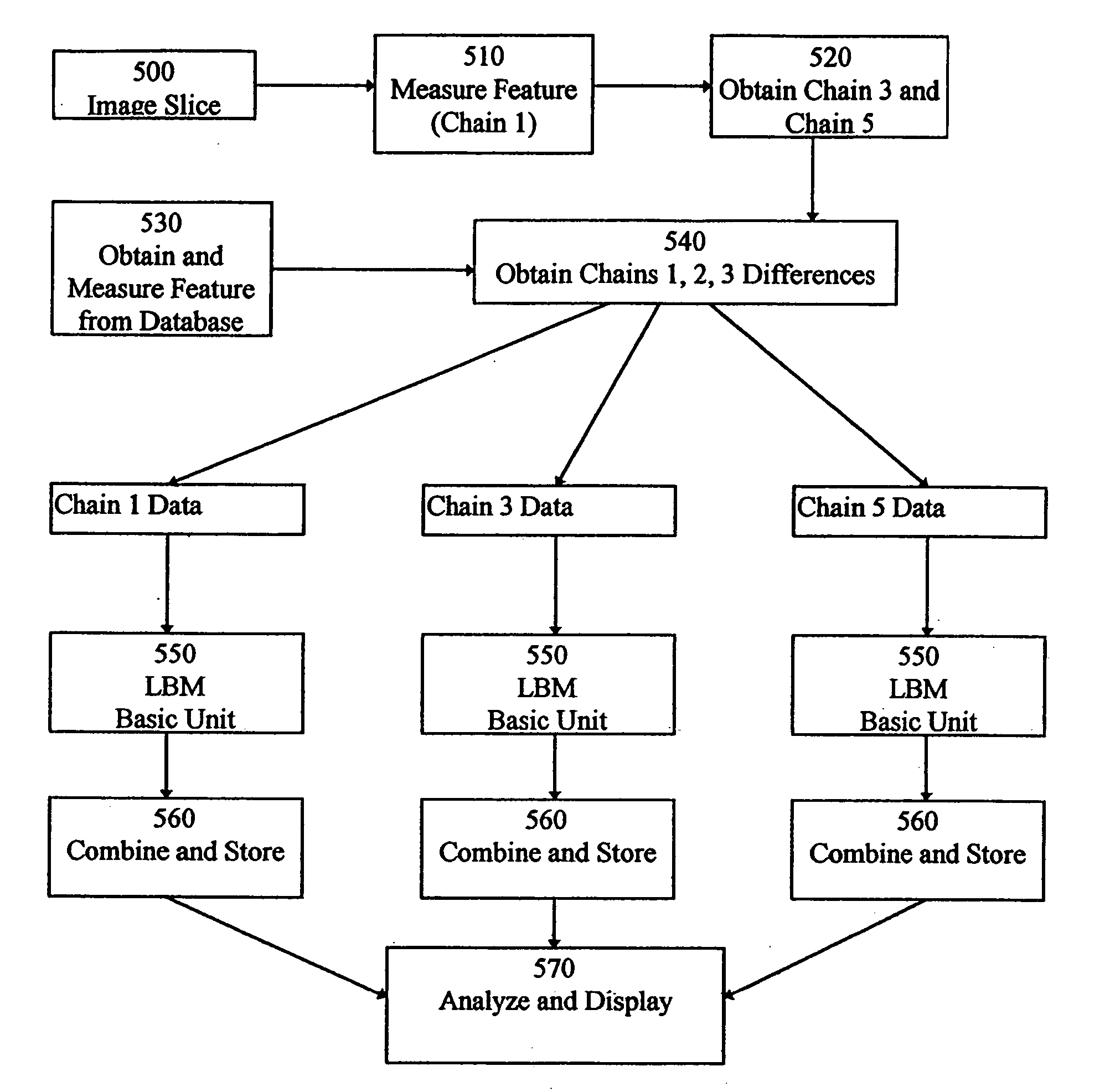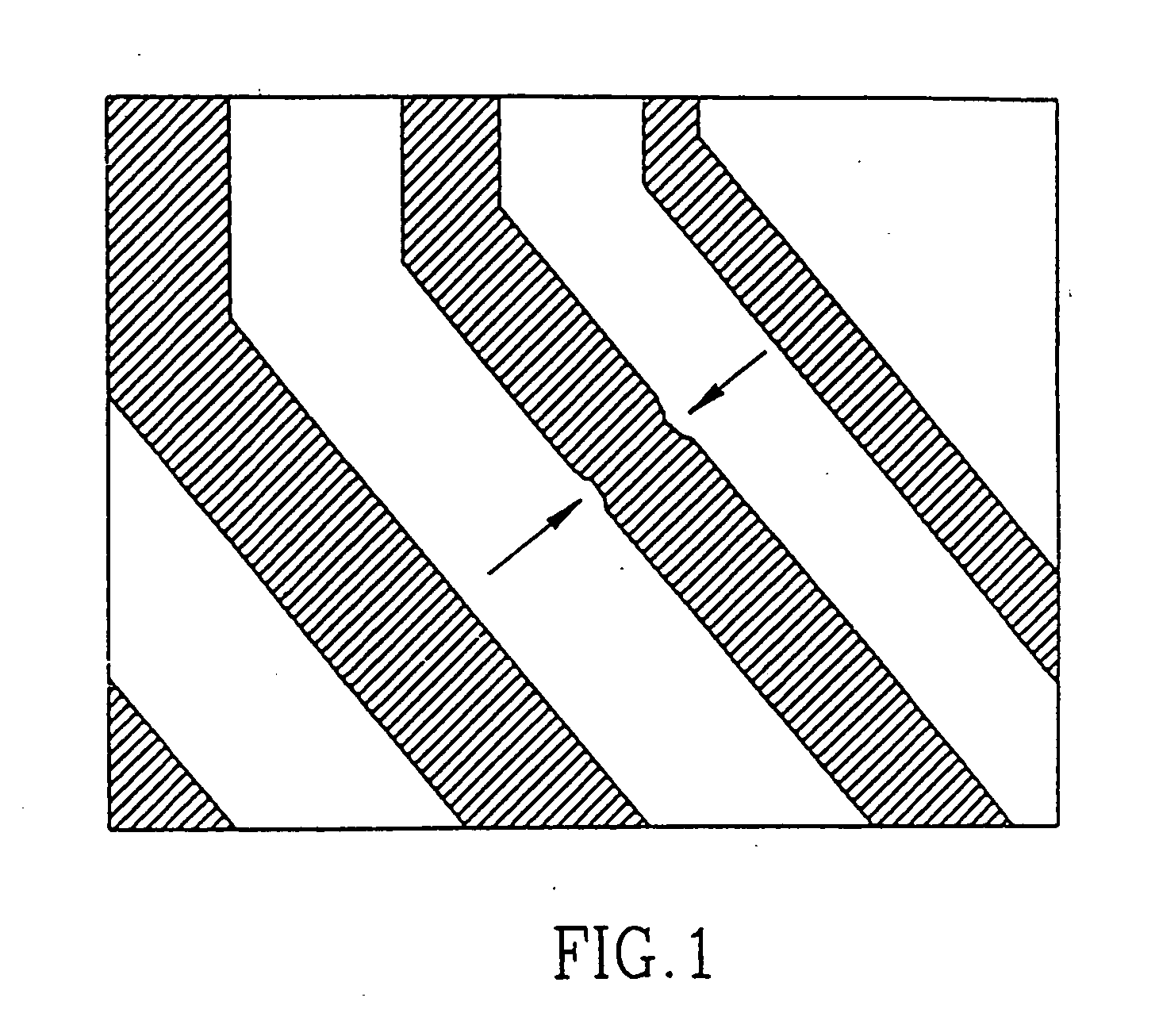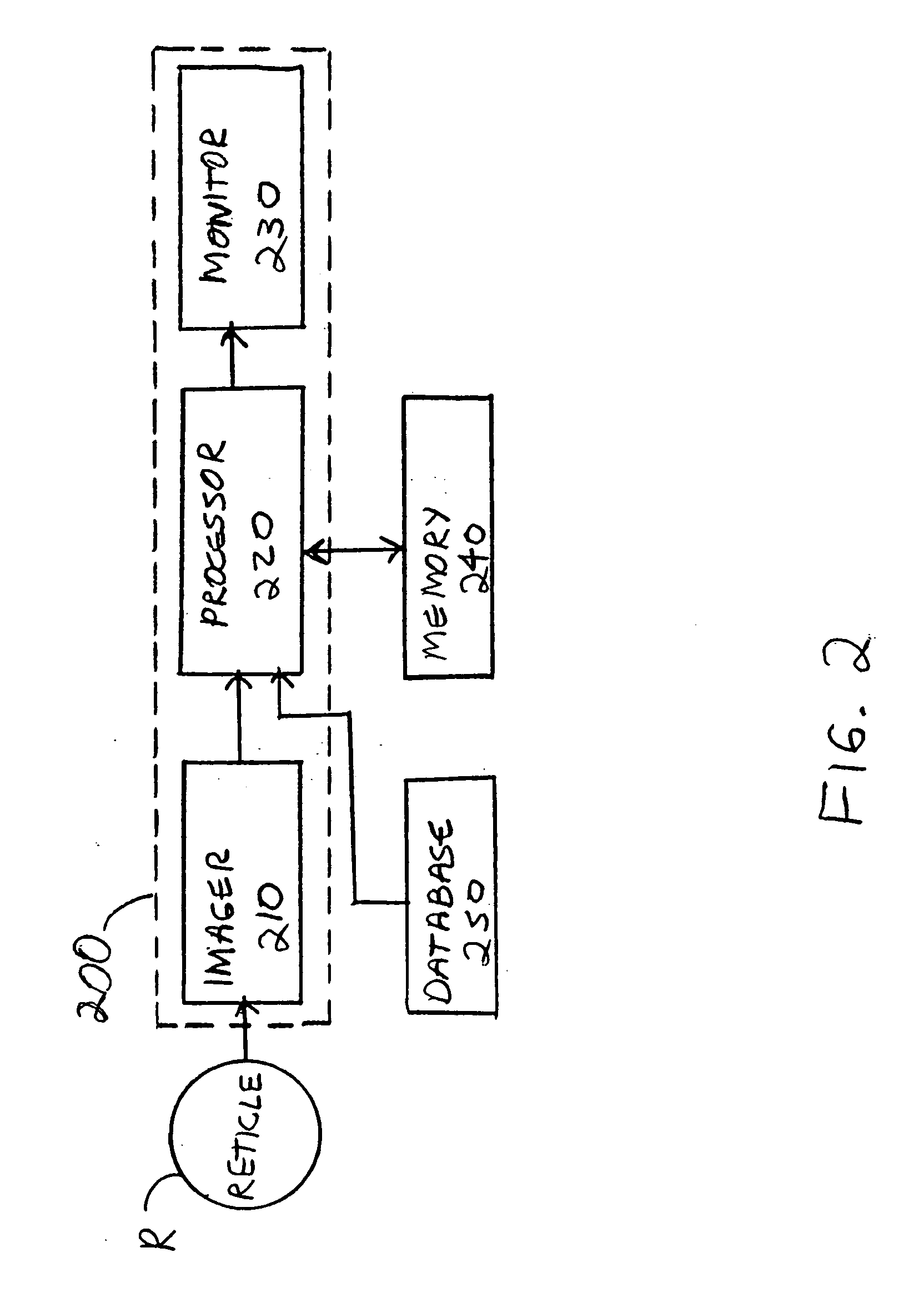Local bias map using line width measurements
a local bias and line width technology, applied in the field of monitoring the production of photolithographic reticles, can solve the problems of reducing the yield of the fabrication line, adversely affecting the performance of the finished semiconductor device, and limiting the number of cd-sem sample sites
- Summary
- Abstract
- Description
- Claims
- Application Information
AI Technical Summary
Benefits of technology
Problems solved by technology
Method used
Image
Examples
Embodiment Construction
[0030] The present invention is implemented at an inspection tool 200, as shown in FIG. 2, comprising an imager 210 for imaging the surface of a reticle R at high speed, typically using a line or area CCD and an illumination source such as a lamp or a laser. Inspection tool 200 further comprises a processor 220, which preferably performs the analysis disclosed herein electronically, and a monitor 230 for displaying results of the analyses of processor 220. Processor 220 is in communication with a conventional reticle reference design database 250 and a memory device 240. Inspection tool 200 may be a conventional reticle inspection system, such as the RT-8200, ARIS-i, and the inspection tools described in U.S. Pat. No. 5,619,429, entitled “Apparatus and Method For Inspection Of a Patterned Object By Comparison Thereof To a Reference”, and U.S. Pat. No. 5,619,588, entitled “Apparatus and Method For Comparing and Aligning Two Digital Representations of an Image” the entire disclosures ...
PUM
| Property | Measurement | Unit |
|---|---|---|
| feature width | aaaaa | aaaaa |
| threshold | aaaaa | aaaaa |
| feature length | aaaaa | aaaaa |
Abstract
Description
Claims
Application Information
 Login to View More
Login to View More - R&D
- Intellectual Property
- Life Sciences
- Materials
- Tech Scout
- Unparalleled Data Quality
- Higher Quality Content
- 60% Fewer Hallucinations
Browse by: Latest US Patents, China's latest patents, Technical Efficacy Thesaurus, Application Domain, Technology Topic, Popular Technical Reports.
© 2025 PatSnap. All rights reserved.Legal|Privacy policy|Modern Slavery Act Transparency Statement|Sitemap|About US| Contact US: help@patsnap.com



